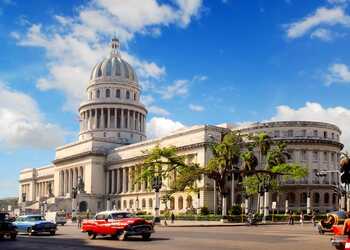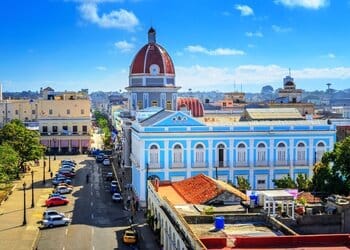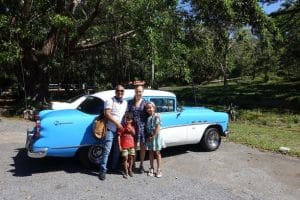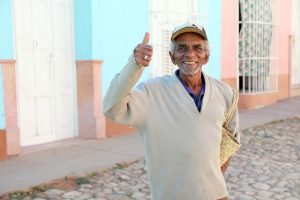Cities in Cuba
Cities in Cuba
Cities in Cuba to Visit
Cities in Cuba: History, Culture, and Caribbean Charm
The most visited cities in Cuba are located in the western and central parts of the island. But Cuba is not just a Caribbean destination with paradisiacal beaches—it’s also a country rich in history, culture, and urban life filled with charm and authenticity. The cities in Cuba offer a fascinating blend of colonial architecture, vibrant street life, and a cultural heartbeat shaped by music, art, and tradition. In this article, we take a general and informative look at some of the island’s most emblematic cities, all of which are included in our tailor-made private tours designed for travelers seeking meaningful experiences.
Cities in Cuba to Visit
Cities in Cuba: History, Culture, and Caribbean Charm
The most visited cities in Cuba are located in the western and central parts of the island. But Cuba is not just a Caribbean destination with paradisiacal beaches—it’s also a country rich in history, culture, and urban life filled with charm and authenticity. The cities in Cuba offer a fascinating blend of colonial architecture, vibrant street life, and a cultural heartbeat shaped by music, art, and tradition. In this article, we take a general and informative look at some of the island’s most emblematic cities, all of which are included in our tailor-made private tours designed for travelers seeking meaningful experiences.


Why explore these cities in Cuba with our tailor-made private tours?
Each of the cities in Cuba has its own rhythm, personality, and unique way of showcasing the island’s cultural wealth. When you choose a tailor-made private tour with cubaneotravel.com, you’re not just visiting places—you’re living curated experiences crafted around your interests. Our expert guides and personalized itineraries help you uncover the most authentic aspects of each destination.
The cities we focus on—Havana, Varadero, Viñales, Trinidad, Cienfuegos, and Playa Larga—each reflect a different side of Cuba. Together, they provide a comprehensive view of the country’s cultural, historical, and geographical diversity.
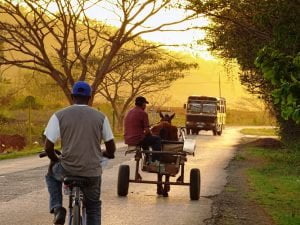
When talking about the cities in Cuba, it’s important to understand that each one mirrors a different historical era, from colonial and republican times to the revolutionary period. Urban planning in Cuban cities reflects a society that has continuously adapted to social and economic changes while preserving a strong cultural identity. From provincial capitals to smaller urban centers, Cuban cities are built on three essential pillars: historical legacy, community life, and everyday cultural expression.
Urban Design and Architecture: A Blend of Eras
One of the most captivating features of Cuban cities is their architecture. Throughout the island, you can admire a blend of styles—from colonial baroque and art déco to mid-20th-century modernism and more functional contemporary buildings.
Many historic city centers still maintain their original layouts, including central plazas, churches, theaters, and administrative buildings that reflect the classic organization of Spanish colonial towns. In contrast, newer neighborhoods and suburban areas reveal the social and economic transitions Cuba has undergone, featuring collective housing, workers’ districts, and open community spaces.
This architectural diversity turns the cities in Cuba into an urban mosaic—perfect for travelers who enjoy walking and discovering history on every corner.

Everyday Life in Cuban Cities
Cuban cities are more than just buildings and monuments—they are living, breathing spaces where daily life unfolds in vibrant and often unexpected ways. Picture street vendors selling tropical fruit, children playing on sidewalks, musicians rehearsing traditional Cuban rhythms, and neighbors chatting from their balconies. Urban life in Cuba follows its own rhythm, driven by social interaction, creativity, and resilience. Despite economic challenges, the cities maintain an infectious energy that surprises and delights visitors.
One standout feature is the active use of public spaces. Parks, plazas, and boulevards become gathering points where people of all ages come together to share stories, enjoy art, practice sports, and build community.
Culture and Education in Urban Settings
In the cities of Cuba, culture plays a central role. Each city hosts cultural centers, art galleries, theaters, and alternative spaces that foster artistic and educational activities. Access to education and cultural development has historically been a priority in Cuba, and this is reflected in the vibrant life of its urban areas.
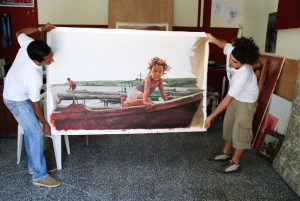
The Cuban education system—from elementary schools to universities—is mostly concentrated in the cities, attracting students, professionals, and cultural projects. Both traditional and contemporary art forms find space for free expression in these urban centers, including music, dance, literature, cinema, painting, and more. This makes the cities in Cuba vibrant hubs of artistic creation and cultural resistance, where everyday life often becomes a form of art
Transportation and Urban Mobility
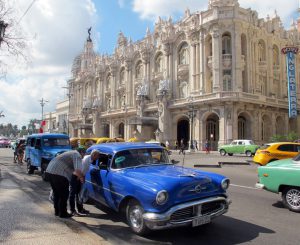
Transportation is an important factor when exploring cities in Cuba. While conditions vary by region, most cities offer a mix of public transport options, including urban buses, shared taxis known as “almendrones,” and motorcycle taxis. Some areas have embraced alternative mobility options like bike sharing or even horse-drawn carriages in smaller towns. The road infrastructure presents challenges, but these are met with creative, community-based solutions that reflect the resilience of the Cuban people.
In many cities, walking is one of the best ways to get around. The scale of Cuban urban centers makes it easy to explore on foot, allowing for a more authentic and immersive travel experience.
Small Cities in Cuba with Big Personalities
Even the smallest cities in Cuba have a strong identity. Mid-sized urban centers play an essential role in territorial balance and in preserving local traditions. Some of them may be less known internationally, but they offer a level of authenticity that deeply resonates with travelers seeking off-the-beaten-path experiences.
These cities often have a strong community spirit, close ties to the natural environment, and a slower pace of life that allows visitors to connect more directly and intimately with the real essence of Cuba.
Regional Diversity in the Cuban Cities
While they share common features, the cities in Cuba vary greatly depending on the region. In the west, colonial heritage and a well-developed tourism industry are prominent. The central part of the island combines historical landmarks with natural beauty and a lively cultural atmosphere. In the east, African heritage and revolutionary history are especially prominent.
This regional diversity makes traveling from one city to another feel like discovering multiple Cubas within a single island. The changes go beyond geography—they reflect different mentalities, customs, and ways of life.
Conclusion: Why Explore the Cities in Cuba?
The cities in Cuba reflect the complexity and richness of the nation. Their streets hold centuries of history, artistic expression, social challenges, and collective dreams. To explore Cuban cities is to truly understand Cuban identity—beyond postcards and clichés. From the bustling streets of Havana to the peaceful valleys of Viñales, from the living history of Trinidad to the biodiversity of Playa Larga, every city offers something unique. Traveling through them with CubaNeo Travel ensures more than a sightseeing tour—it’s a profound cultural and human journey.
Visiting the cities of Cuba allows travelers to discover an authentic, ever-evolving country, full of stories waiting to be told.
Why explore these cities in Cuba with our tailor-made private tours?
Each of the cities in Cuba has its own rhythm, personality, and unique way of showcasing the island’s cultural wealth. When you choose a tailor-made private tour with cubaneotravel.com, you’re not just visiting places—you’re living curated experiences crafted around your interests. Our expert guides and personalized itineraries help you uncover the most authentic aspects of each destination.
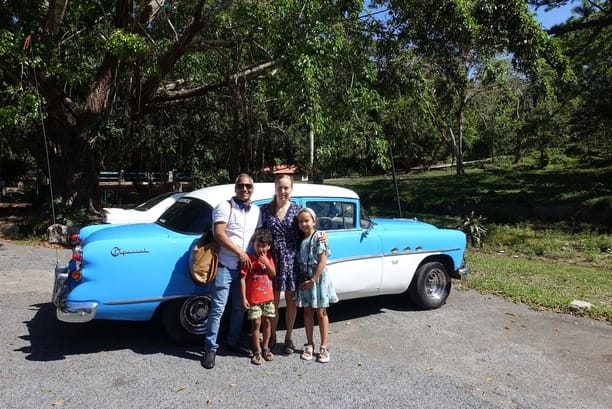
The cities we focus on—Havana, Varadero, Viñales, Trinidad, Cienfuegos, and Playa Larga—each reflect a different side of Cuba. Together, they provide a comprehensive view of the country’s cultural, historical, and geographical diversity.
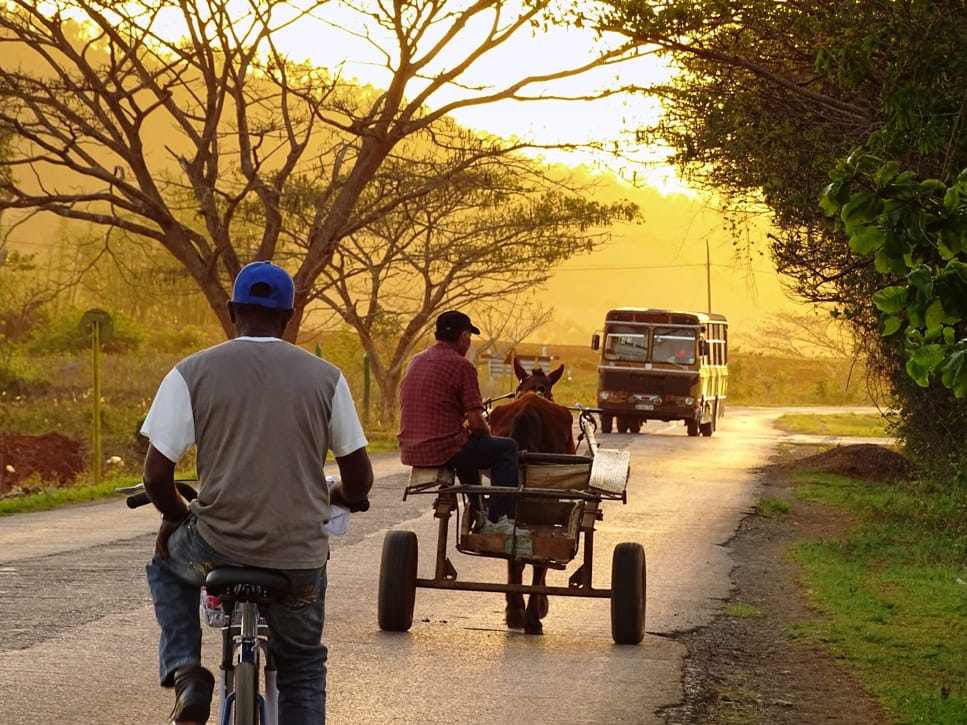
When talking about the cities in Cuba, it’s important to understand that each one mirrors a different historical era, from colonial and republican times to the revolutionary period. Urban planning in Cuban cities reflects a society that has continuously adapted to social and economic changes while preserving a strong cultural identity. From provincial capitals to smaller urban centers, Cuban cities are built on three essential pillars: historical legacy, community life, and everyday cultural expression.
Urban Design and Architecture: A Blend of Eras
One of the most captivating features of Cuban cities is their architecture. Throughout the island, you can admire a blend of styles—from colonial baroque and art déco to mid-20th-century modernism and more functional contemporary buildings.
Many historic city centers still maintain their original layouts, including central plazas, churches, theaters, and administrative buildings that reflect the classic organization of Spanish colonial towns. In contrast, newer neighborhoods and suburban areas reveal the social and economic transitions Cuba has undergone, featuring collective housing, workers’ districts, and open community spaces.
This architectural diversity turns the cities in Cuba into an urban mosaic—perfect for travelers who enjoy walking and discovering history on every corner.

Everyday Life in Cuban Cities
Cuban cities are more than just buildings and monuments—they are living, breathing spaces where daily life unfolds in vibrant and often unexpected ways. Picture street vendors selling tropical fruit, children playing on sidewalks, musicians rehearsing traditional Cuban rhythms, and neighbors chatting from their balconies. Urban life in Cuba follows its own rhythm, driven by social interaction, creativity, and resilience. Despite economic challenges, the cities maintain an infectious energy that surprises and delights visitors.
One standout feature is the active use of public spaces. Parks, plazas, and boulevards become gathering points where people of all ages come together to share stories, enjoy art, practice sports, and build community.

Culture and Education in Urban Settings
In the cities of Cuba, culture plays a central role. Each city hosts cultural centers, art galleries, theaters, and alternative spaces that foster artistic and educational activities. Access to education and cultural development has historically been a priority in Cuba, and this is reflected in the vibrant life of its urban areas
The Cuban education system—from elementary schools to universities—is mostly concentrated in the cities, attracting students, professionals, and cultural projects. Both traditional and contemporary art forms find space for free expression in these urban centers, including music, dance, literature, cinema, painting, and more. This makes the cities in Cuba vibrant hubs of artistic creation and cultural resistance, where everyday life often becomes a form of art

Transportation and Urban Mobility
Transportation is an important factor when exploring cities in Cuba. While conditions vary by region, most cities offer a mix of public transport options, including urban buses, shared taxis known as “almendrones,” and motorcycle taxis. Some areas have embraced alternative mobility options like bike sharing or even horse-drawn carriages in smaller towns. The road infrastructure presents challenges, but these are met with creative, community-based solutions that reflect the resilience of the Cuban people.
In many cities, walking is one of the best ways to get around. The scale of Cuban urban centers makes it easy to explore on foot, allowing for a more authentic and immersive travel experience.

Small Cities in Cuba with Big Personalities
Even the smallest cities in Cuba have a strong identity. Mid-sized urban centers play an essential role in territorial balance and in preserving local traditions. Some of them may be less known internationally, but they offer a level of authenticity that deeply resonates with travelers seeking off-the-beaten-path experiences.
These cities often have a strong community spirit, close ties to the natural environment, and a slower pace of life that allows visitors to connect more directly and intimately with the real essence of Cuba.

Regional Diversity in the Cuban Cities
While they share common features, the cities in Cuba vary greatly depending on the region. In the west, colonial heritage and a well-developed tourism industry are prominent. The central part of the island combines historical landmarks with natural beauty and a lively cultural atmosphere. In the east, African heritage and revolutionary history are especially prominent.
This regional diversity makes traveling from one city to another feel like discovering multiple Cubas within a single island. The changes go beyond geography—they reflect different mentalities, customs, and ways of life.
Conclusion: Why Explore the Cities in Cuba?
The cities in Cuba reflect the complexity and richness of the nation. Their streets hold centuries of history, artistic expression, social challenges, and collective dreams. To explore Cuban cities is to truly understand Cuban identity—beyond postcards and clichés. From the bustling streets of Havana to the peaceful valleys of Viñales, from the living history of Trinidad to the biodiversity of Playa Larga, every city offers something unique. Traveling through them with CubaNeo Travel ensures more than a sightseeing tour—it’s a profound cultural and human journey.
Visiting the cities of Cuba allows travelers to discover an authentic, ever-evolving country, full of stories waiting to be told.
